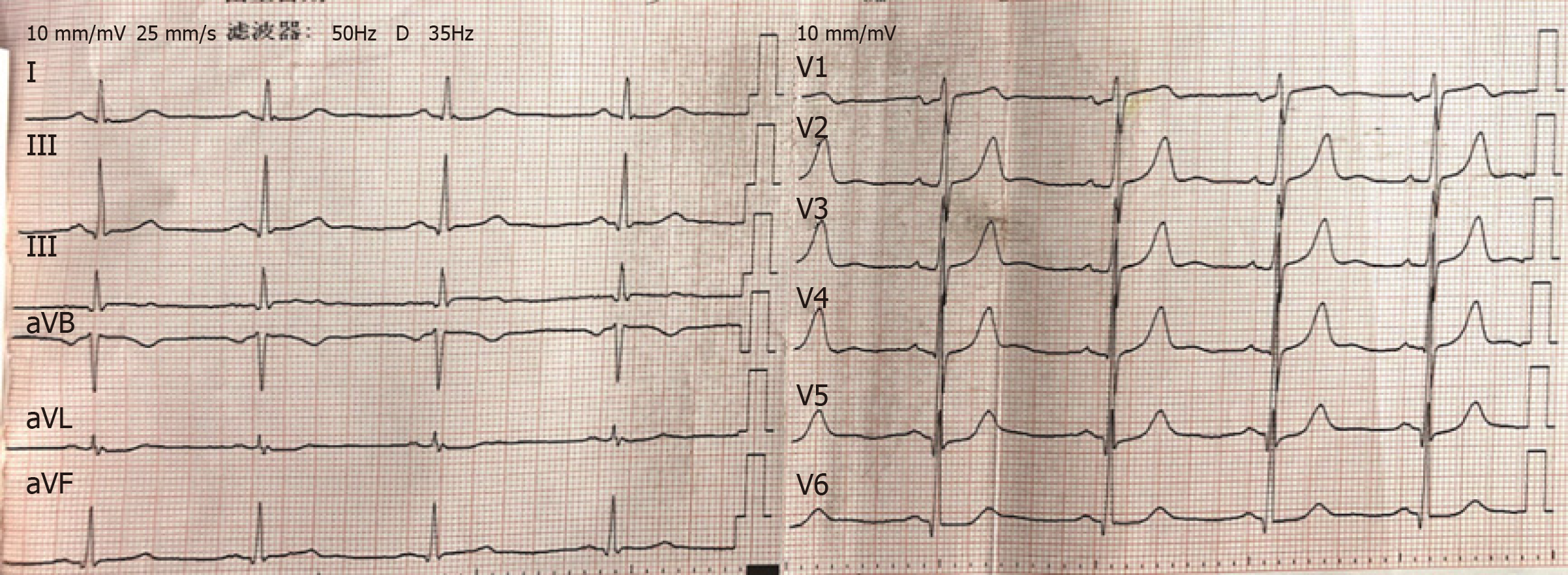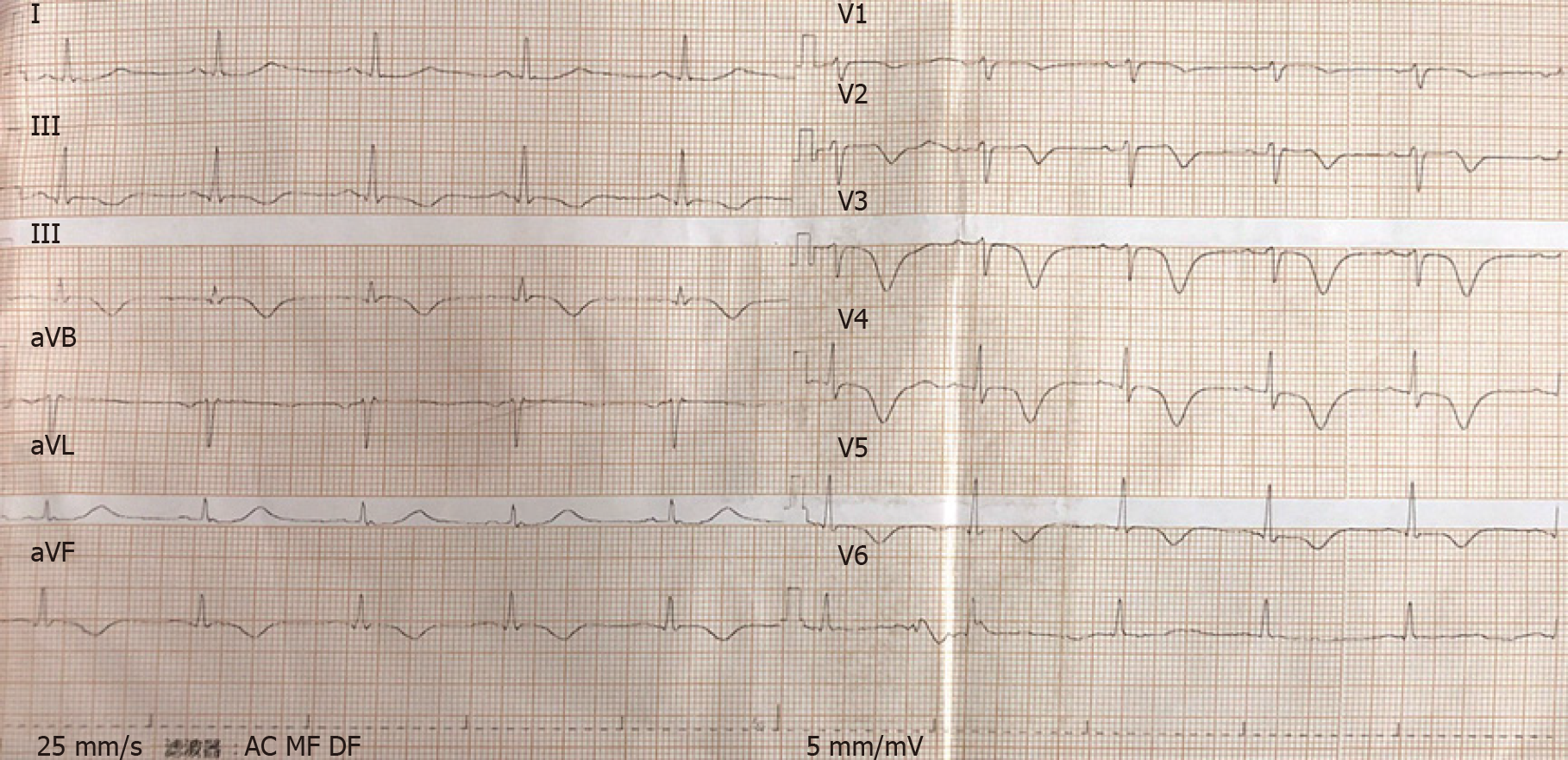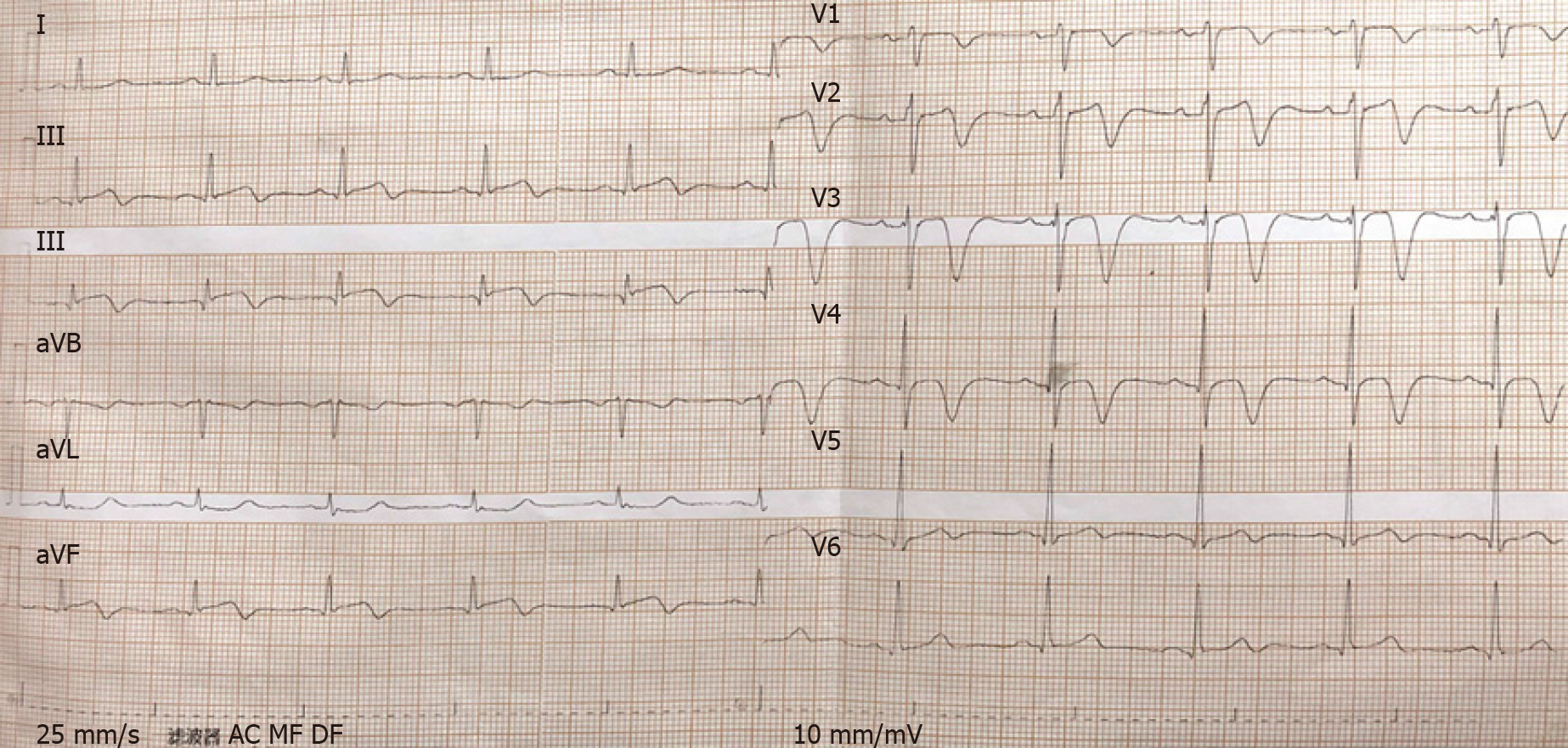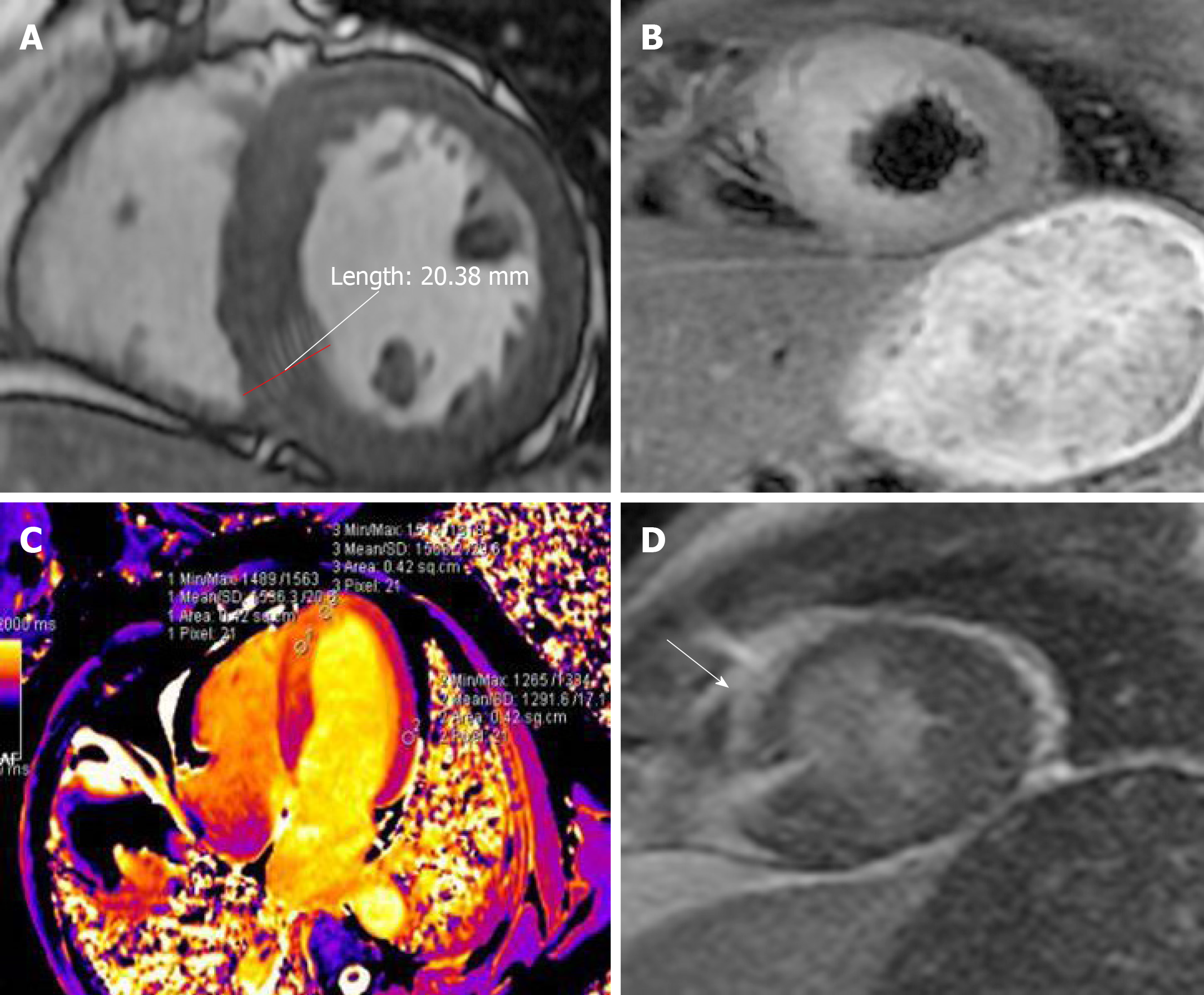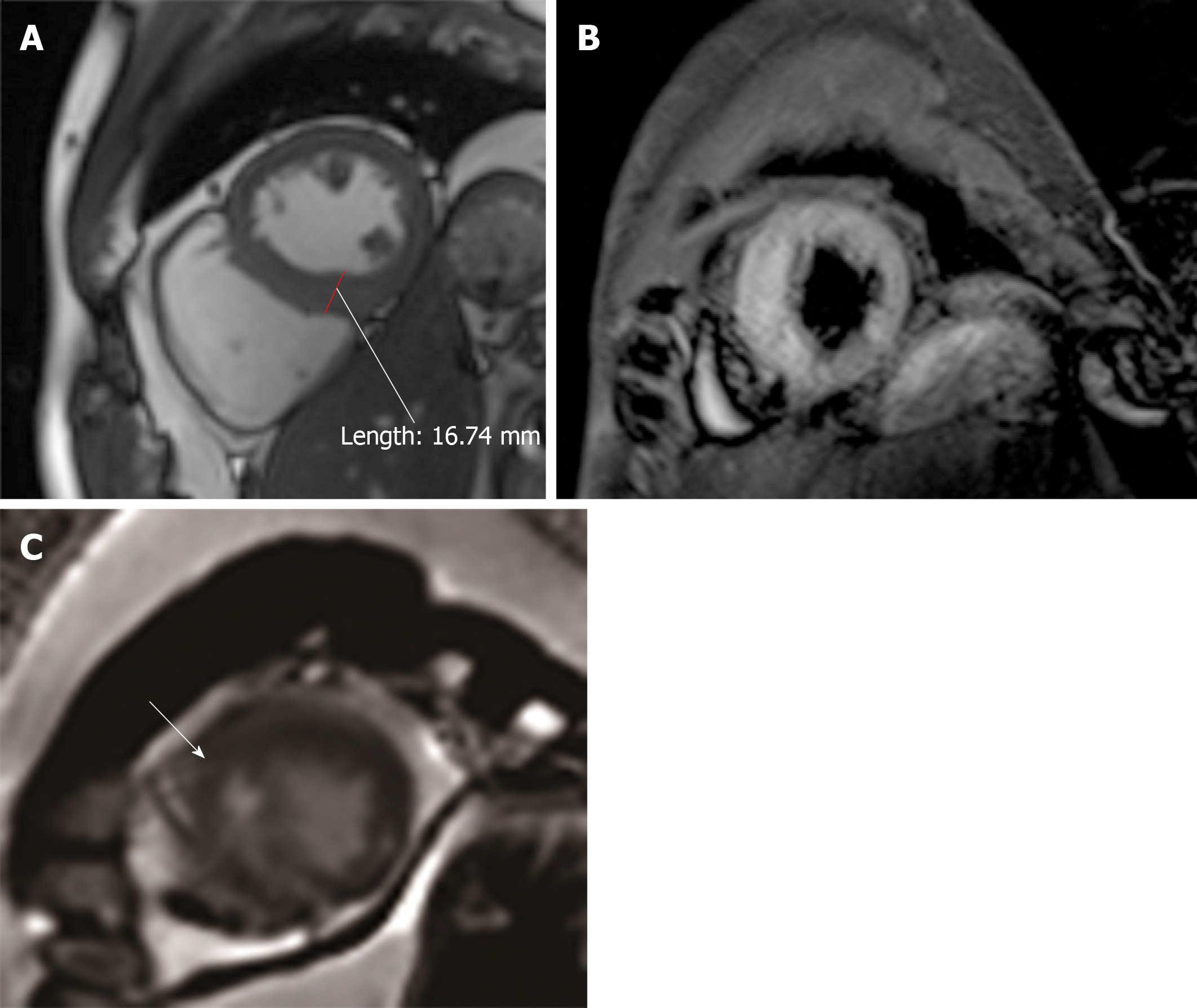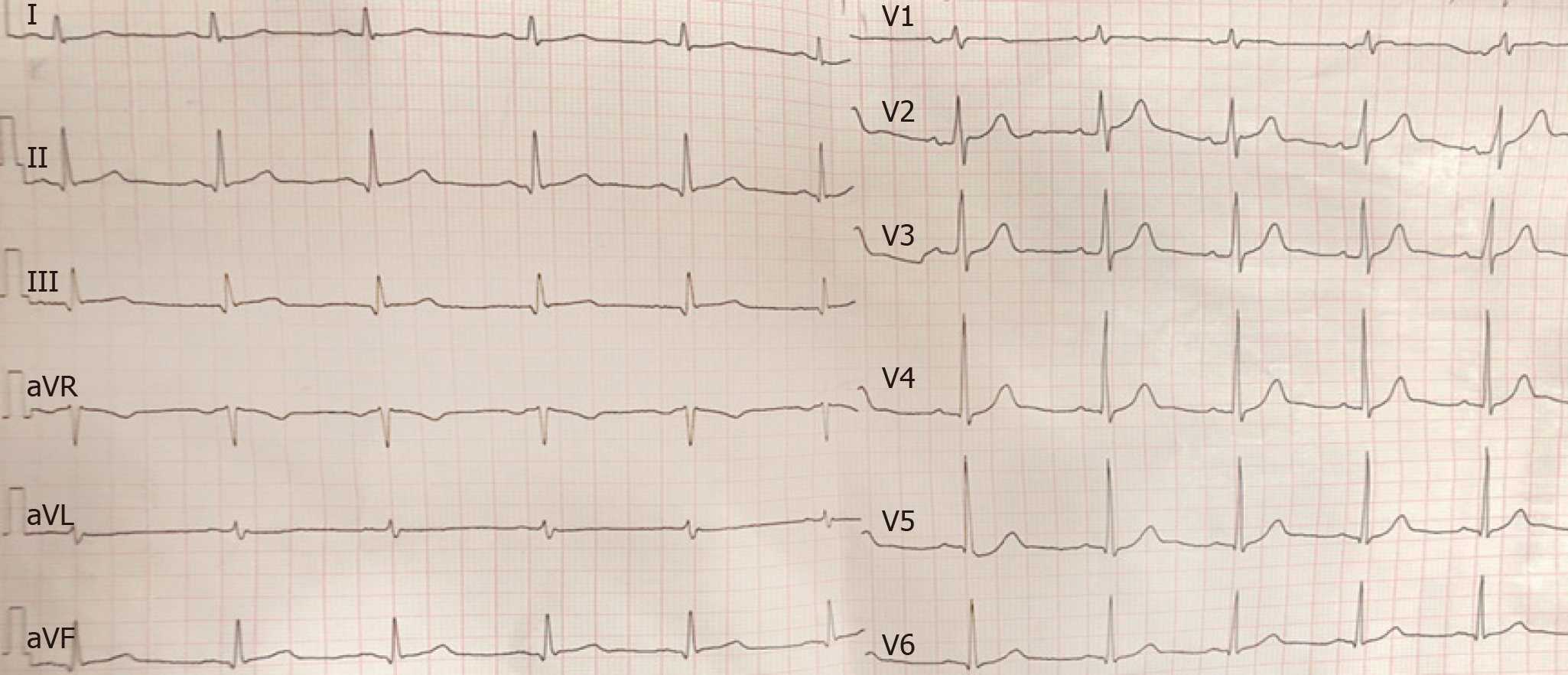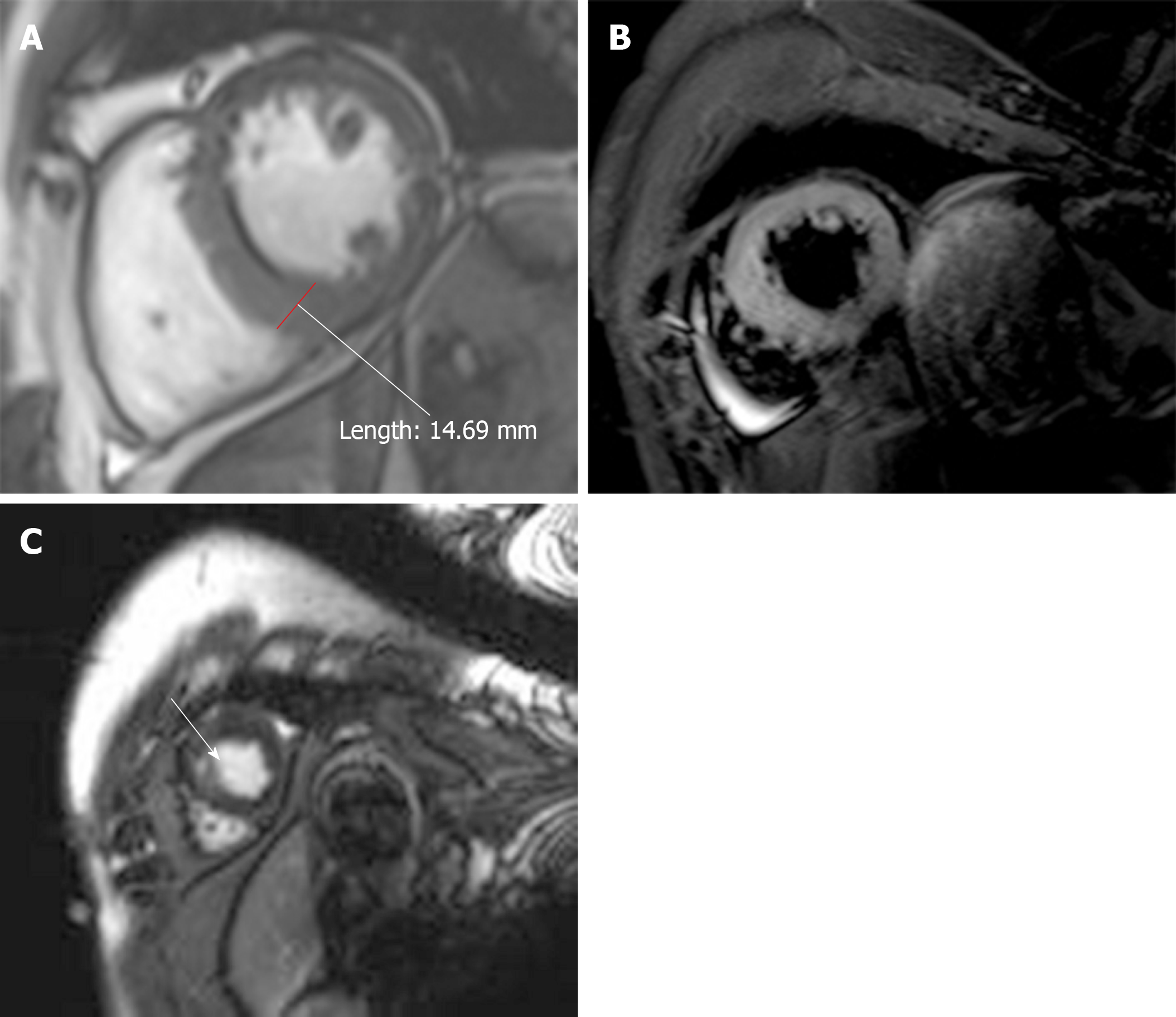Copyright
©The Author(s) 2020.
World J Clin Cases. Jan 26, 2020; 8(2): 415-424
Published online Jan 26, 2020. doi: 10.12998/wjcc.v8.i2.415
Published online Jan 26, 2020. doi: 10.12998/wjcc.v8.i2.415
Figure 1 Electrocardiogram showing V2-5 T-wave towering after the chest pain.
Figure 2 Electrocardiogram showing II, III, and avF T-wave inversion and V2-5 T-wave inversion after admission.
Figure 3 Electrocardiogram showing II, III, and avF T-wave inversion and V2-5 T-wave inversion at 20 h after admission.
Figure 4 Cardiovascular magnetic resonance imaging.
A: In the CINE sequence at the left ventricular end-diastolic phase, the ventricular wall was 20.38 mm, which was more thicken than the normal (about 12 mm); B: FS-T2WI showed obvious edema; C: The T1 mapping showed that the T1 value of the walls was obviously higher than that of the normal walls (1586.3 ms vs 1291.6 ms) in the interventricular septum in the first cardiovascular magnetic resonance; D: Late gadolinium enhancement of the endocardium and middle myocardium of the middle and apical septal walls.
Figure 5 Cardiovascular magnetic resonance imaging.
A: In the CINE sequence at the left ventricular end-diastolic phase, the apical septal wall was less extensive after 12 d; the ventricular wall was 16.74 mm, which was thicker than normal; B: FS-T2WI showed obvious edema; C: The anterior and interior late gadolinium enhancement moved to the middle myocardium.
Figure 6 Electrocardiogram was normal after 10 mo.
Figure 7 Cardiovascular magnetic resonance imaging.
A: In the CINE sequence at the left ventricular end-diastolic phase, the ventricular wall of the apical septal myocardium was 14.69 mm; B: In FS-T2WI, mid septal myocardium signal was normal; C: Late gadolinium enhancement in the middle myocardium, which was only one point, was obviously less than before.
- Citation: Hou YM, Han PX, Wu X, Lin JR, Zheng F, Lin L, Xu R. Myocarditis presenting as typical acute myocardial infarction: A case report and review of the literature. World J Clin Cases 2020; 8(2): 415-424
- URL: https://www.wjgnet.com/2307-8960/full/v8/i2/415.htm
- DOI: https://dx.doi.org/10.12998/wjcc.v8.i2.415









